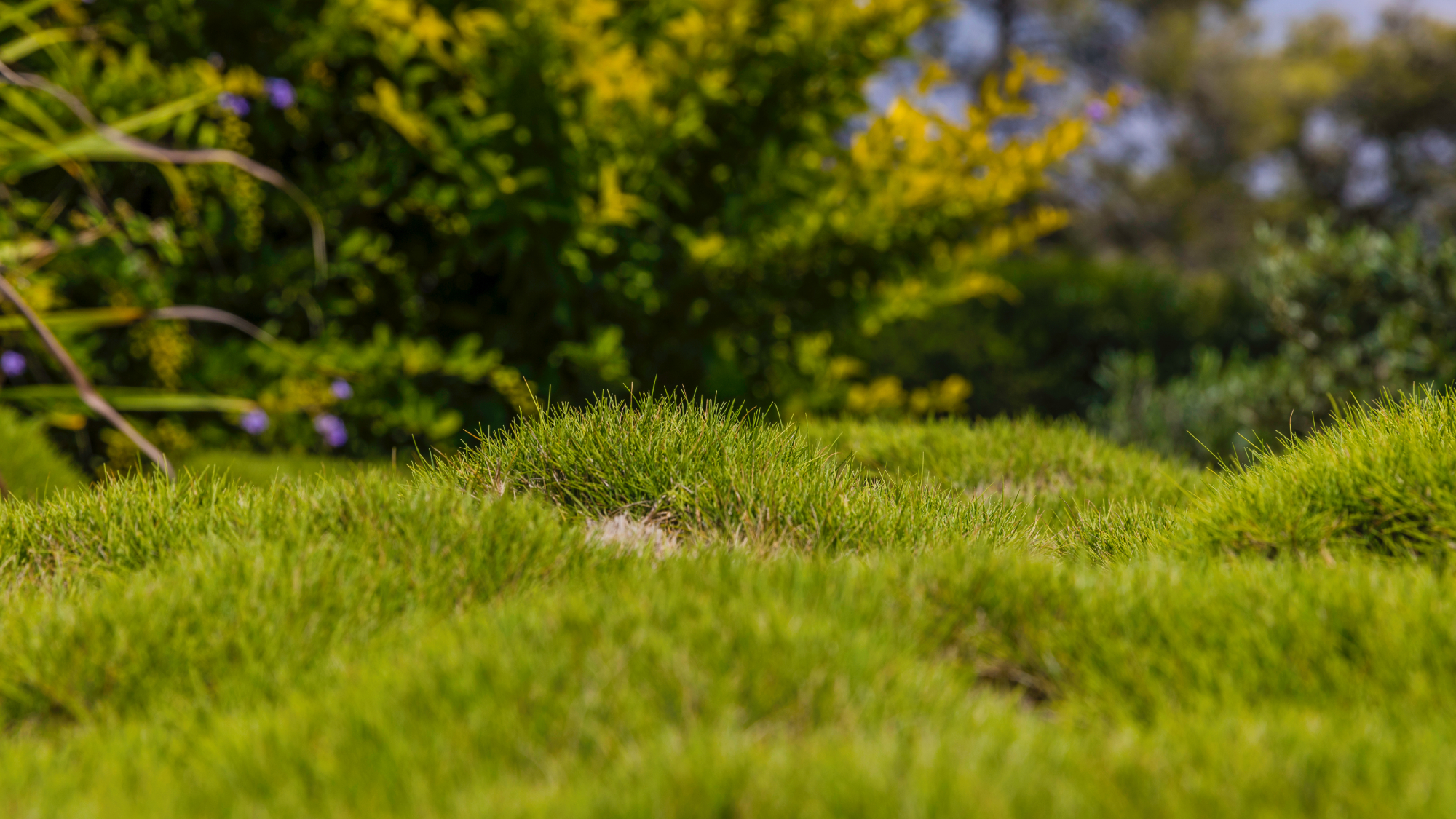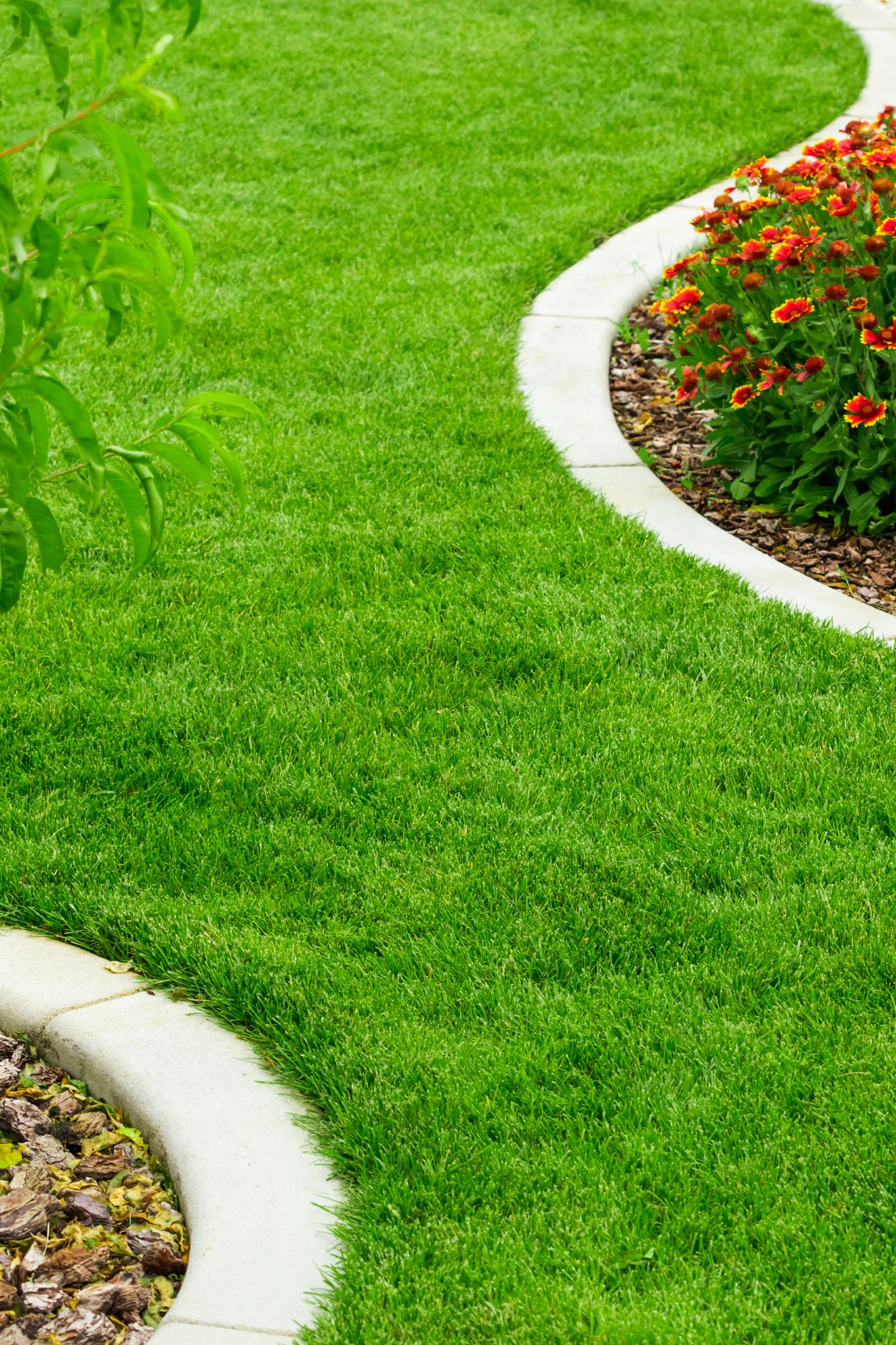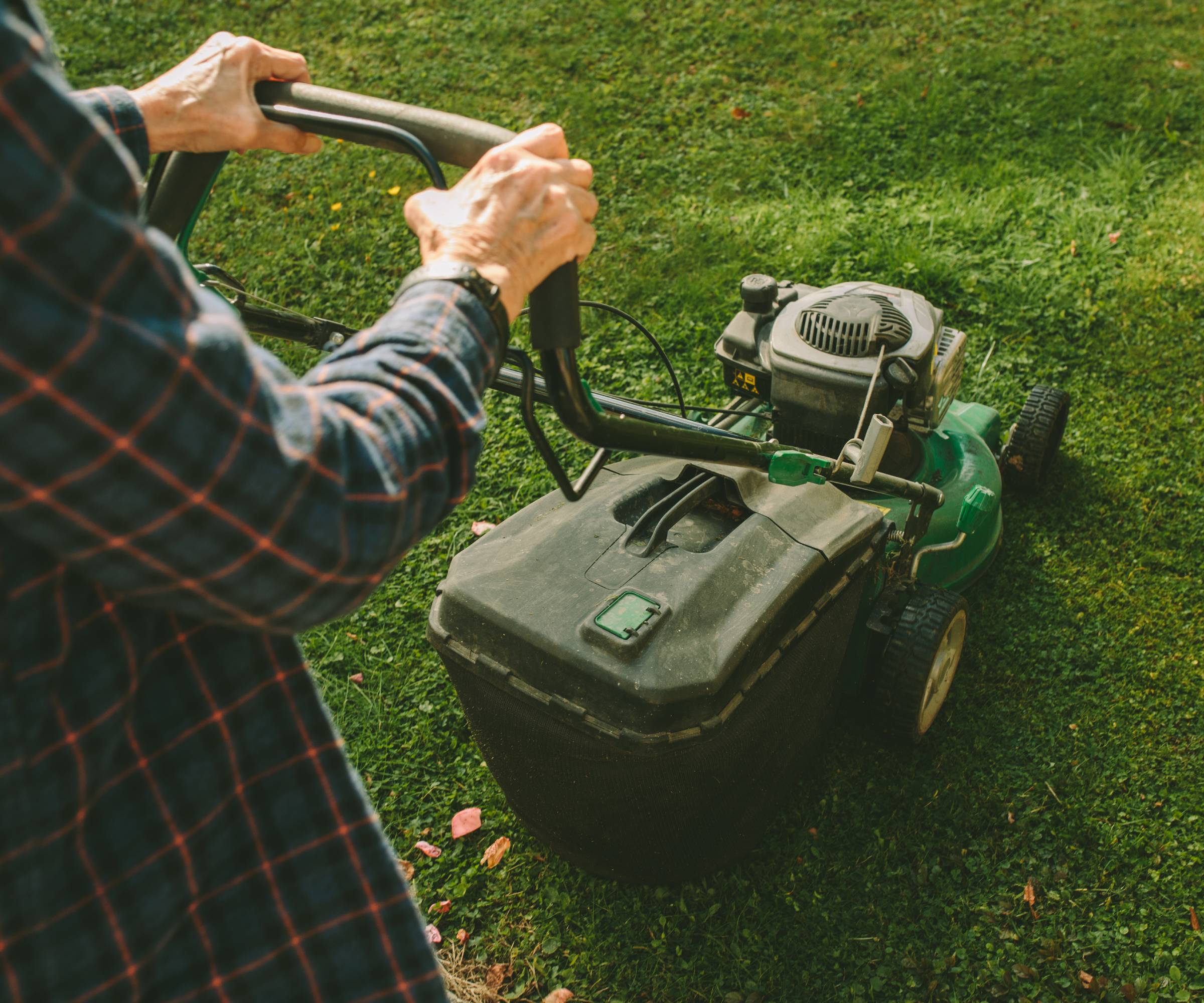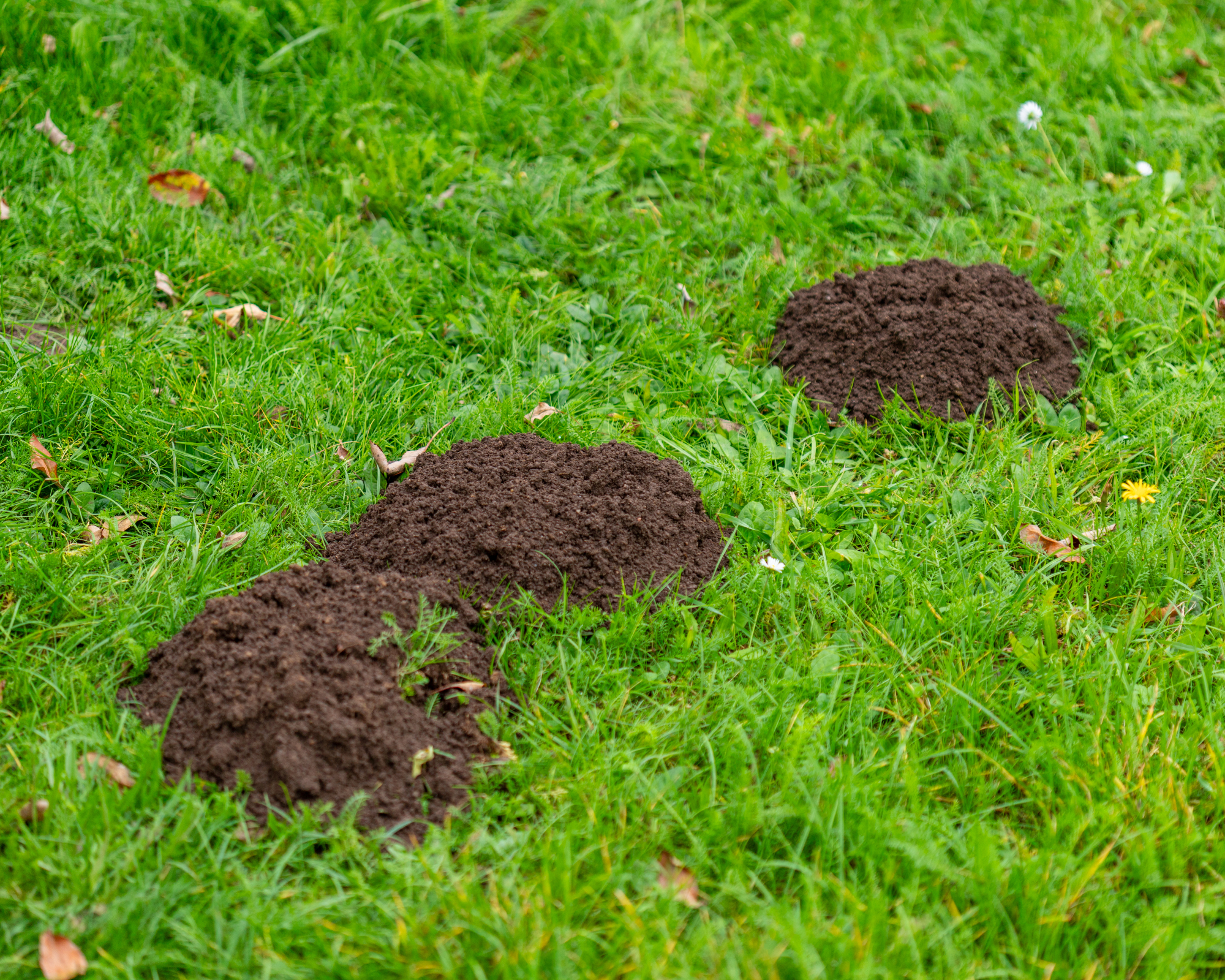This Is the Easiest Way to Level Your Lawn – And It Only Takes 2 Items You Probably Already Own
Get a perfectly flat lawn with this simple guide. It only takes a couple items you probably already own to do it right.


Knowing how to level a lawn is helpful if your garden is naturally lumpy. A lawn pitted with divots is not only unsightly, but also unhealthy and potentially dangerous. Even small pits and hills can cause falls and injuries, collect water, and negatively affect turf health.
Fortunately, smoothing out your yard isn’t difficult and you don’t need any fancy tools to level your lawn either. I’ll share a simple way to level your lawn with only two items you probably already own or can buy for just a few bucks at any hardware store.
Here’s how to level your lawn quickly and easily. Just follow these simple steps for a lush, lovely, and level lawn.
Why Level Your Lawn?
A level lawn might not seem that important, especially when compared to growing healthy green turf, but it makes a difference. There are several reasons to consider taking the time to level your lumpy lawn:
- Prevent pooling. A poorly leveled lawn contains divots that can create puddles when it rains. This isn’t always an issue, but if your soil doesn’t drain well or you get a lot of rain, you can end up with puddles that breed mosquitoes and even cause root rot.
- Improve lawn health. Pooling interferes with growing a healthy lawn, but there are other ways that leveling can improve overall turf health. Leveling allows you to treat your lawn more uniformly, so fertilizer and pesticides don’t get clumped in certain areas.
- Reduce safety hazards. A lumpy lawn can be a safety risk. Even if you’re only walking across the lawn, divots and pits can lead to a twisted ankle or worse. If you have active kids, a level lawn reduces injury risks. It also makes it easier to place outdoor furniture and decorations that won’t tip over.
- Make mowing easier. Mowing the lawn is easier and more effective when you don’t have to navigate pits, divots, and small hills all over the lawn.

Best Time to Level a Lawn
Spring and early fall are the best times to level a lawn. Wait for a day when the lawn is fairly dry and there is no major rain in the upcoming forecast. If you grow cool-season grass, aim for leveling in early fall. You can overseed your lawn at the same time.
If you have warm-season grass, spring is an ideal time for this chore. Generally, warm-season grass should be actively growing when you level the lawn.
The Easiest Way to Level Your Lawn
Leveling the lawn might seem like a big job, but it doesn’t have to be. You don’t need to hire a landscaping company, buy a fancy lawn leveling rake, or rent and push a heavy lawn roller.
Sign up for the Gardening Know How newsletter today and receive a free copy of our e-book "How to Grow Delicious Tomatoes".
Instead, I'll show you the easy way to get a flatter yard with two items you probably already own – a rake and topsoil. Here's how to do it:
1. Prepare the lawn

Start by mowing the lawn, but not too short. You want the grass growing in low spots to be able to recover and keep growing after the next few steps.
If your lawn has a lot of thatch, remove some of it. Heavy thatch suffocates grass. If it’s not too compacted, you can use a rake to dethatch your lawn. A stiff metal rake, like this one from Amazon, is the best tool for the job. Though any rake will work.
Otherwise, you can consider renting a dethatcher to make the job easier – though this is typically unnecessary.
2. Identify problem areas

Next, find all the low areas in the lawn you want to correct. If you have a big lawn and many low spots, you might want to mark the areas with stakes to make the next step easier and ensure you don’t miss anything.
Put a stake or some kind of marker – you can even use stones or sticks you find in your yard – wherever you notice a low spot or divot so you know where the problem areas are.
3. Add top dressing

Buy or make a top dressing of topsoil and homemade compost to fill in the sunken areas of the yard. Make sure you get a high-quality topsoil, like this one from Scotts, that is free of weed seeds that can cause problems down the road.
There are even specialty soil mixes that have fertilizer mixed in to give grass seeds a strong start, like this Turf Builder LawnSoil from Scotts, which you can also find on Amazon.
If your soil is naturally heavy and contains a lot of clay, you can add some sand to your top dressing to help improve drainage.
4. Rake, water, and seed

Once you’ve added top dressing to all your divots, use a rake to even it out. After you have the top dressing in place, you can add grass seed, which you can find on Amazon. Though this might not be necessary depending on how large the areas you need to fill are.
For large spots, overseeding is the best course of action. This will ensure grass fills in fast and the divot or low spot disappears by next summer. However, you might want to wait for the right time to overseed, which is typically early fall.
Whether you add grass seed or not, do water the lawn. This will help the new top dressing settle and is necessary to germinate grass seeds.
Common Mistakes to Avoid
Lawn leveling can be a simple chore, but as with any gardening task, there are potential pitfalls to avoid for the best results.
For example, leveling at the wrong time can cause problems. If you get heavy rain right after leveling, it can wash away your hard work and erode all the topdressing you just added.
If you level the lawn during the middle of summer when the weather is hot and dry, you can add more stress to an already stressed lawn. This is bad for the overall health of the turf and can impede its growth.

Don’t skimp on the top dressing of topsoil. This is the most crucial element of the process. If you use the wrong type of fill for your lawn or use a cheap product, you’ll get poor results.
Finally, don’t ignore drainage issues. If you have these problems now, leveling won’t fix them. Consider ways to improve waterlogged soil before you do this task, so you can improve the overall health of your lawn.
Lawn leveling is an important garden chore you should not to overlook. It doesn’t have to be a big job, though. Use these simple and cost-effective tips to get a level, safe, and healthy lawn.

Mary Ellen Ellis has been gardening for over 20 years. With degrees in Chemistry and Biology, Mary Ellen's specialties are flowers, native plants, and herbs.